- How Trees Grow
- Climate and Site Influences
- Pruning
- Fertilization
- Irrigation
- Young Tree Care
- Mature Tree Care
- Professional Tree Care
- Summary
With proper care, trees can be valuable commodities around our homes, communities and urban landscapes. Providing care requires understanding tree biology, or how and why trees function. Trees constantly interact with the environment, including changes in soil, light, temperature, moisture, competitors and pests. Humans can produce additional stress by altering environments, but with proper care and maintenance trees can survive and thrive in your landscape.
To best care for shade and street trees, it is important to learn to recognize problems and understand how trees react to changes in their environment. Caring for trees when they are young can prevent many major defects as they mature and ensure good growth with long-term structural stability. Trees with structural weaknesses can be potentially dangerous to humans and property. These “hazard” trees need to be identified and immediately removed.
Proper care can also correct life-threatening problems, ensure continued health and protect trees from environmental extremes and construction damage. Correctly diagnosing the real cause of problems rather than simply treating symptoms is important. For example, treating a symptom, such as yellow foliage, by applying fertilizer without first determining the true cause of the yellowing may cause undue stress for the tree. Timely treatments that are properly applied will keep trees in the best health possible.
How Trees Grow
To understand tree life, death and proper care, it is essential to understand how trees relate to different parts of their environment. Trees are complex and highly adaptable organisms. Knowing how they function can help ensure tree health.
Trees shoots grow up into the air. The leaves collect carbon dioxide gas from the air and capture light. Roots grow downward and outward into the soil and survive where there is moisture and oxygen. Roots absorb water and essential elements while providing structural support. Chemicals (hormones) govern the timing of shoot and root growth.
Leaves
Green leaves contain chlorophyll, which captures light. The chlorophyll pigment holds light long enough for other molecules to absorb the light energy. Captured light energy activates carbon dioxide molecules gathered from the air. Carbon atoms in each molecule string together like beads and release oxygen. Strings of carbon form sugar, starch and other compounds trees use as food.
Carbohydrates, which come from sugar and starch, move down the tree from the leaves to the roots through the inner bark of the twigs, branches and trunk -- not from the roots to the treetop. Along the way, living cells use those carbohydrates as food. Unused food is stored as starch. A branch or twig must make and store all its own food. Food for next spring?s growth is stored in the last few annual rings of wood close to the branch tip.
Buds
Leaves develop in the growing tip of the shoot. Hardened bud scales cover and protect each growing tip and the developing leaves inside. Each bud consists of protective covers, new stem pieces, new leaves and the growing tip. Buds form in the axil (stem connection) of every leaf and produce hormone signals to keep the top of the tree in communication with the root system. Some buds hold flowers.
 Figure 1. Tree buds contain growing points that produce leaves and shoots. Buds can be grown over with bark and released to grow at a later time.
Figure 1. Tree buds contain growing points that produce leaves and shoots. Buds can be grown over with bark and released to grow at a later time.Within every bud there are leaves with new buds at their base. This redundancy (nesting one bud inside another) allows trees to survive poor environmental conditions and pest attacks.
Buds failing to expand into shoots may be overgrown by bark. Every year bark-overgrown buds grow only enough to keep pace with the tree expansion. These buds are called latent or dormant buds. Latent buds occur around each branch base since every branch originated from a single bud. Branch pruning can release dormant buds near the pruning wound.
Trees maintain thousands of growing points (buds), but few have the opportunity to expand and grow. The terminal bud on a branch controls all the buds below, and the most active buds control the tree. Removing a dominant terminal bud can release the controlled buds.
Bark
Tree bark insulates the living tree against the environment and keeps water in the tree. Old corky bark consists of wax and oil-impregnated walls of collapsed cells. Specialized air channels called lenticels occur in the bark and allow trees to receive oxygen. The living cells of the inner bark transport carbohydrates.
Trunk
The tree stem, or trunk, supports and elevates the leaves, and includes a main trunk, branches and twigs (branches are large twigs and twigs are small branches) that increase in size annually.
The trunk is the transport system for moving materials from the root to the leaves and back again. Water and essential elements move up the trunk and out the branches to the leaves. These materials move in the outer-most annual rings of wood. Carbohydrates move in the opposite direction ? through the inner bark from the leaves down the branch and trunk to the roots.
 Figure 2. Roots collect water and essential elements that move up the trunk and into the branches. The leaves lose water, collect carbon dioxide and light, and manufacture food, which moves down the branches and trunk and back into the roots.
Figure 2. Roots collect water and essential elements that move up the trunk and into the branches. The leaves lose water, collect carbon dioxide and light, and manufacture food, which moves down the branches and trunk and back into the roots.Tree stems must grow every year. Each spring and summer a new sheath of living wood covers last year?s tree. This year?s tree is simply last year?s tree refurbished with new tissue. If a tree cannot grow every year, it will decline and die.
A cross section of a tree trunk has many layers. The outside of the tree is dead bark, which protects the tree. The inner bark is alive and carries food from the top of the tree to the roots. Food and other materials move downward in the inner bark and then toward the tree center through ray cells.
Cambium
The cambium is a layer of cells between the bark and wood that rapidly divides to produce wood and inner bark. The cambium layer expands the twig, branch, trunk and woody root diameters every year, and is a major reaction site that responds to injury.
Inside the cambium are annual rings of wood. The large pores in each annual ring carry water up to the leaves. Although these large pore cells are dead, some fiber cells surrounding the large pores are living. The outer four to 20 annual rings, called sapwood, are usually alive and light colored. The center of large tree trunks is usually darker colored and is called dead heartwood. Many chemicals are produced or deposited in the heartwood. Heartwood in some trees is resistant to decay.
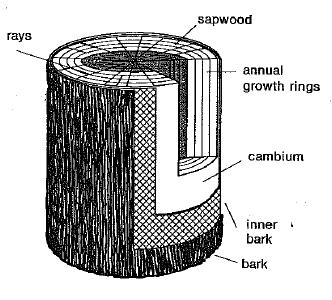 Figure 3. Tree stem structure showing the position of major parts.
Figure 3. Tree stem structure showing the position of major parts.Branches
Branches attach to the tree trunk by interlocking branch and trunk tissues. A wood branch collar produced by the trunk holds the branch base. Branch and trunk tissues expand against each other in the branch crotch. Bark pushes up into a ridge called the branch bark ridge. When the bark ridge is unable to push outward, the bark becomes surrounded by woody trunk and branch tissue. Overgrown bark is referred to as “included bark.” Branches with included bark are weak and likely to split apart.
Leaves on every branch or twig must produce enough food to feed that branch or twig. Food does not move from the roots or other branches to supply a starving branch. Branches unable to support themselves are sealed off. Branches that lose their connection to water and elements cannot produce food. Only productive branches survive.
Roots
Roots develop and survive where plenty of oxygen and moisture occur. Root tips grow and colonize soil areas during most of the year and stop only when soil temperatures are cold.
Most tree roots extend out between two and five canopy diameters from the main stem. Most active roots occur in the top 12 inches of soil. The heavier the soil, the closer to the surface roots will be because they need oxygen. Roots cannot grow well below heavy hardpans or in flooded or compacted soils.
Roots occur as both perennial woody roots and annual absorbing roots. Woody roots become thicker every year with wood and bark just like stems and branches. Woody support roots grow downward and outward to anchor the tree in place. Massive numbers of annual absorbing roots develop from woody roots.
Annual absorbing roots form shallow, horizontal fans growing in the soil. These roots are the ones that take up water and essential elements. Thousands of annual root fans develop and then die during the growing season. Root fans occur where there is plenty of water and essential elements, such as beneath decomposing litter on the soil surface.
Tree roots try to avoid each other when they are young, but may be forced together to form a graft union as they grow larger. Root grafting can cause problems under special circumstances. For example, all elms on a street may be connected by root grafts. These grafts can conduct diseases from one tree to the next.
Roots absorb and transport water and essential elements. Elements move slowly downward with water from one soil particle to another. Tree root fans lie horizontally near the soil surface to capture water and dissolved elements as they move past.
Leaves control water absorption in the root. Water in the leaves evaporates (transpiration) through leaf pores (stomates). As the water molecules evaporate, they pull up water molecules behind them. Leaf transpiration pulls long strings of water from the soil into the root, up the stem and to the leaf. During drought conditions, leaves cannot produce enough force to remove water from dry soils and can be damaged.
Defense
Trees defend themselves by sealing off problems from the rest of the tree with barrier walls, which develop when damage occurs or the inside of the tree is exposed to the environment. These barriers form biologically and physically sealed compartments. Decay, disease, insect and mechanical damage are walled-in to seal damaged portions off from the rest of the tree.
Communication
Tree branches must communicate with roots and trunks to ensure proper growth and defense. Trees do not have a nervous system like animals but do have a chemical communication system. Buds produce auxin, a communication substance that passes from the shoot tip and leaves to the root tips through living cells. Root tips produce a second communication substance, cytokinin, which enters the water stream and moves to the top of the tree.
The ratio of these and other growth hormones changes with seasonal activity and the health of the shoots and roots. Each cell in the tree continually reads the combined messages so shoots always know what the roots are doing, and vice-versa. Responses are dictated by the tree?s genetic make-up. Synthetic communication substances, such as herbicides, can disrupt growth.
Growth
Not all parts of a tree grow at the same time. Trees grow in episodes. Roots grow for a while, then the shoots grow. In a large oak, for example, one branch may grow for a couple of weeks, then another branch will grow.
Growth requires plenty of water. Growing points inside buds create new cells, but water must be available to expand these cells. Without water for hydraulic expansion, tissues remain small. Extension growth requires the right chemical signal, cell replication and enough water to enlarge the cells.
Tree growth rates change from day to day, day to night and throughout the seasons. The better the water conditions, the more growth a tree will experience. Since water is more readily available at night, most tree elongation occurs at this time.
Climate and Site Influences
Climate influences tree growth principally through light, temperature, moisture and wind, and affects optimum spacing, irrigation, fertilization, pruning and pest control. Seasonal climate changes determine which trees adapt and thrive. Shade and street trees must be able to endure and respond to climatic changes over their life spans.
Light
The sunny days of summer may have light intensities four times that needed for maximum photosynthesis, but beneath tree leaves light intensity falls off quickly. Light levels within the canopy may be so low that leaves cannot make enough food to survive. Other plants also may not be able to grow beneath a tree because of dense shade.
Many trees are sensitive to photoperiod, the day length that regulates vegetative and reproductive activity. Photoperiod can influence leaf shape, leaf drop, fall color and the onset of dormancy. The long days and short nights of spring and summer promote vegetative growth. The short days of late summer and fall slow elongation and initiate overwintering activities.
The length of the dark period between light periods actually regulates photoperiod response. Streetlights can artificially shorten night length and promote continuous growth. As a result, sensitive trees may begin growth early in the spring or fail to halt growth in the fall and experience cold injury. High-pressure sodium, metal halide and incandescent street lamps are most likely to cause growth problems. Mercury vapor lamps affect trees the least. Table 1 lists light-sensitive trees.
Table 1. Selected tree response to nighttime lighting.
|
Sensitive
|
Tolerant
|
|
Basswood
|
Ash
|
|
Birch
|
Bradford Pear
|
|
Black Locust
|
Ginkgo
|
|
Catalpa
|
Hickory
|
|
Cottonwood
|
Holly
|
|
Dogwood
|
Magnolia
|
|
Elm
|
Oak
|
|
Goldenrain-tree
|
Pine
|
|
Hemlock
|
Spruce
|
|
Honeylocust
|
Sweetgum
|
|
Maple
|
Walnut
|
|
Redbud
|
|
|
Silverbell
|
|
|
Sycamore
|
|
|
Yellow-poplar
|
|
|
Zelkova
|
|
Temperature
Temperature is an uncontrollable environmental factor. It is closely related to the amount of sunlight present, since visible light energy is absorbed and radiated as heat. Sunlight not reflected by or used in the leaf is felt as sensible heat, which can be dissipated by water evaporation from leaves or soil.
Low temperatures can kill or injure trees. Critical periods for cold injury include spring and fall frosts, the coldest portion of mid-winter and cold periods immediately following winter warming periods. Cold injury causes leaf and flower bud death, tree trunk sunscald, immature stem dieback and frost damage to tender shoots and flowers.
Rapid temperature changes can be especially devastating. Sudden temperature drops in late fall before trees harden-off can result in severe injury. Warmer temperatures in late winter or early spring allow trees to lose hardiness. Extreme temperature drops under these conditions can result in tree death.
Tree species and cultivars also influence hardiness. Growing hardy selections minimizes potential injury from low temperatures. To enhance fall shoot maturation, reduce water and fertilization of trees sensitive to fall cold late in the season. Once cold weather begins, moist soils ensure adequate water supplies and improve soil heat absorption. Vigorous trees with large food reserves withstand cold temperatures better.
Tree-dormancy chemicals in vegetative and flower buds prevent growth during winter. The dormant resting condition is the key to winter survival because it prevents growth during periods of warm winter weather. During winter, dormancy chemicals are slowly broken down. Serious injury may occur after dormancy inhibitors are gone and warm temperatures initiate growth. Rapidly dropping temperatures can then kill active buds and tissues. Little can be done to prevent this type of injury. Some trees lose their dormancy inhibitors after only a month or two of cold weather and are repeatedly injured by cold.
Cold temperatures are not the only climatic extreme that causes tree injury. High temperatures can also cause injury by desiccation (drying out) when transpiration greatly exceeds moisture absorption. As the water content in leaves decreases, stomates close, leaves wilt, transpiration drops and leaf temperatures increase due to reduced evaporative cooling. High night temperatures increase respiration rates and food consumption. Trees living in constant high temperatures may exhibit little growth.
Moisture
Natural rainfall provides moisture for new and established trees. Periodic droughts can be devastating. Going weeks without moisture can create problems for trees, especially those with small soil moisture reservoirs (i.e., limited root zones). Many landscaped areas have restricted moisture supplies. Building and paving can increase transpiration and reduce moisture in root zones.
Low soil moisture causes leaves to wilt and young shoots to droop. When low moisture persists, leaf margins and tips begin to brown. Browning spreads between the veins and continues until the leaves are completely dead or drop off. Irrigate before permanent injury occurs to the foliage to keep trees healthy.
Soils
Soil supplies trees with water and essential elements and is frequently responsible for the poor performance of many shade and street trees. Soil is a complex physical, chemical and biological system. All soils are biologically alive with a wide range of organisms, including bacteria and fungi. About half the volume of an ideal soil consists of pore spaces filled with air and water. Soil characteristics influence water infiltration and movement, water and essential element retention, and aeration. The hills, slopes and valleys of the landscape influence trees through water accumulation, runoff, erosion and temperature fluctuation.
Soil pore size determines air movement and root growth. Most soil particles are held together as aggregates. Aggregate formation produces large pores that aid in the infiltration and movement of water and the exchange of air. The water and essential element-holding capacity of individual soil particles still function within each aggregate. Soil aggregates are fragile and easily compressed or destroyed. Excessive traffic or construction, especially when the soil is wet, readily destroys aggregates and reduces water and air movement. Site development and building construction can compact soils, and adding soil fill around existing trees prevents oxygen and water movement to the roots.
Soil depth and texture determine the moisture and essential element reservoir and influence rooting depth. Usually, the deeper the soil, the greater the water and essential element supplies. Distinctly different soil layers can interrupt air and water penetration. Subsoil layers with high clay content cause water to accumulate and form a perched water table. Poor aeration from water driving the oxygen out of the soil pores above the clay layer restricts root growth. Sand or gravel layers can also interrupt the normal penetration of roots and water.
Soil Elements
Soil elements are available to trees in the soil solution. Only a small portion of essential elements in a soil is available for tree use at any one time. Essential elements are absorbed by roots, held by the soil or leached deeper into the soil. As existing elements become depleted, more elements move into the soil solution. Clay particles attract positively charged ions, like potassium, calcium and magnesium, to their negatively charged surface. These ions held near clay particles move into the soil solution and are taken up by trees or move deeper in the soil.
Negatively charged ions, like nitrates, phosphates and sulfates, are held near organic materials with positive charges. These ions are quickly taken up or leached from the soil. Negatively charged ions may combine with other elements, precipitate and become insoluble (such as phosphorus). Soil microorganisms can quickly change nitrogen compounds into inert atmospheric nitrogen.
pH
Soil reaction, expressed as pH, refers to the acidity or alkalinity of a soil. Soil pH influences tree growth by affecting solubility of essential elements and the activity of microorganisms. Soils with high pH, above 7.8, are highly alkaline and have little iron or manganese available. Under acidic conditions (low pH), manganese and aluminum may reach toxic levels. Microbial activity in soils, especially nitrogen fixing bacteria, decreases as soil pH decreases below 5.5. Most trees grow in the pH range of 5.5 to 7.8. Acid-tolerant trees can grow in soils as low as pH 4.0.
Pruning
Pruning determines the future shape, structural design and continued health of a tree. Correct pruning prolongs tree health and reduces future maintenance. Improper pruning may be life threatening. Flush-cut pruning causes severe damage. A proper pruning cut for larger branches has three steps:
- Cut on the underside of the branch 8 to 12 inches out from the trunk. Undercut about one-third of the way through the branch to prevent bark tearing.
- Move out 2 to 3 inches beyond the first cut and cut down. The second cut completely servers the branch and it falls away without tearing the bark.
- Remove the remaining stub. Make the cut outside the branch bark ridge and branch collar.
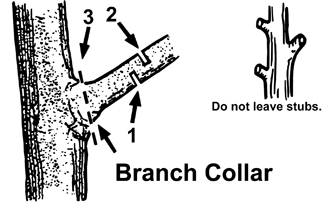 Figure 4. To remove heavy branches without damaging the tree, a three-cut sequence is recommended. Cut to the branch collar (swollen area where the branch joins the main trunk) and avoid leaving a stub. (This figure was taken from “Pruning Ornamental Plants in the Landscape,” UGA Cooperative Extension Bulletin 961.)
Figure 4. To remove heavy branches without damaging the tree, a three-cut sequence is recommended. Cut to the branch collar (swollen area where the branch joins the main trunk) and avoid leaving a stub. (This figure was taken from “Pruning Ornamental Plants in the Landscape,” UGA Cooperative Extension Bulletin 961.)Trunk tissue at the bark ridge and in the branch collar remains uninjured. The branch collar tissue forms a natural protective barrier against pests and decay. A proper pruning cut leaves the smallest possible wound to callus over.
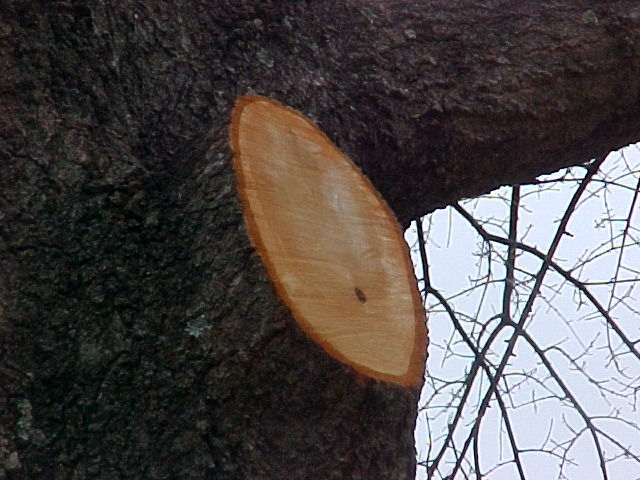 Figure 5. Proper pruning leaves the branch collar intact with no branch stub. (Photo: Timothy Daly, Gwinnett County Extension.)
Figure 5. Proper pruning leaves the branch collar intact with no branch stub. (Photo: Timothy Daly, Gwinnett County Extension.)Prune twigs, small branches or large limbs to the outside of the branch collar and bark ridge. Flush-cutting a branch even with the stem is unprofessional and abusive to trees because it damages the trunk, inhibits natural barrier formation and provides entry for pest or decay organisms. Proper pruning leaves the branch collar intact with no branch stub. Stubs prevent wound closure and can result in decay entering directly into the main stem of the tree. The remaining branch collar initially bulges out from the trunk but loses its prominence in a few years.
Tree Shaping
Use proper branch pruning techniques to remove unwanted branches and to shape your trees. Never stub back or shear trees. Cutting off the ends of the outside branches leads to dead stubs that become a liability. Dormant buds grow, forming new branches around the wounds. These new branches grow rapidly and densely. Repeated and progressively heavier pruning will be required over time. Pests and decay will enter into the stubbed branch ends. Large numbers of weak branches will continue to grow.
To shape a tree or remove unwanted branches, prune the branches at the trunk or where they are attached to a major branch. Pruning wounds are left inside the tree crown, rather than at branch tips, reducing the number of sprouts because of shading. Follow the three-cut pruning technique outlined above. Proper branch pruning pays off in good tree health.
Wound Paints
Wound paints are cosmetic only and are not required for treating fresh wounds. They do not hasten callus development or protect the tree from decay. In fact, paints can increase pest problems and prevent wound closure. Use tree wound paints only when clients demand disguising bright pruning cuts.
Topping
“Topping” a tree involves cutting the main trunk or major branches off below the top of the tree. Treetop removal should be done only under extreme circumstances. Consider total tree removal before topping. Tree crowns may be lowered when growing into overhead wires, buildings or other trees. Improper crown removal results in decay, heavy resprouting, loss of aesthetic form and severely reduced life span.
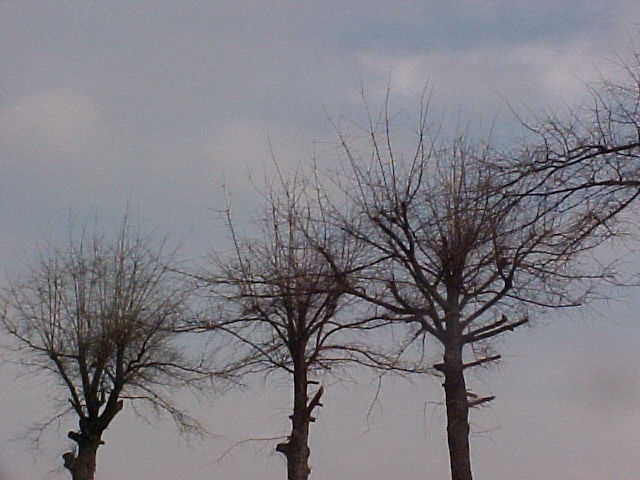 Figure 6. Trees that have been topped are weakened and are more susceptible to damage and pests. (Photo: Timothy Daly, Gwinnett County Extension Agent)
Figure 6. Trees that have been topped are weakened and are more susceptible to damage and pests. (Photo: Timothy Daly, Gwinnett County Extension Agent)
Drop-crotch crown removal (cutting back to existing large branches) is the best way to lower a tree?s crown. Always follow proper pruning techniques by cutting parallel with the branch bark ridge. Do not leave a flat, horizontal cut.
 Figure 7. Tree topping is not recommended. When necessary, use a properly applied drop-crotch method to lower tree canopies. Always remove branches back to large lateral branches.
Figure 7. Tree topping is not recommended. When necessary, use a properly applied drop-crotch method to lower tree canopies. Always remove branches back to large lateral branches.Girdling
Girdling wounds can kill trees by preventing the transport of food and raw materials. Damage from cuts, lawn mowing, weed removal with a weed eater, or pressure from ties or chains on trunks and branches can damage the inner bark and cambium. Tight guywires, tree wrap fasteners, wire and string can also cause girdling wounds. Pressure between the restricting device or wire and the expanding wood will crush the cambium. Immediate removal of restricting items may save your tree.
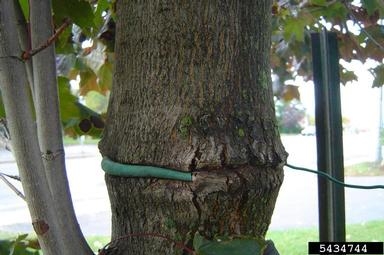 Figure 8. A girdled tree trunk. (Photo: Brenda Lucas, Bugwood.org)
Figure 8. A girdled tree trunk. (Photo: Brenda Lucas, Bugwood.org)Fertilization
Proper fertilization encourages rapid development and continued health of shade and street trees. Fertilization may improve plant vigor, make trees less susceptible to pests and may help overcome decline; however, it can also increase susceptibility to diseases such as fire blight. Young trees develop more rapidly when fertilized, while mature trees need little fertilization as long as they exhibit good leaf color and reasonable growth.
Tree fertilization needs are difficult to determine based upon growth or off-colored foliage. Essential element deficiency symptoms are also caused by girdling roots, compacted soils, waterlogged sites, air pollution, root diseases, nematodes and salt injury. Accurately diagnosing the cause of leaf yellowing and poor growth is necessary for proper treatment. It is critical to use soil testing to determine essential element shortages.
Soils influence the quantity and availability of essential elements. Trees growing in sandy soils require frequent applications of small quantities of fertilizer.Trees growing in clay soils require less frequent applications because their deep and wide root systems reach more water and elements. Compacted soils restrict root activity and physically impede growth and absorption of essential elements.
Essential Elements
Sixteen elements are essential for tree growth. Three essential elements are taken from air and water and the remaining 13 elements are usually derived from the soil. Plants use macro-elements in large amounts and micro-elements in much smaller quantities. Required elements must be available in suitable quantities for proper growth. Deficiency of any single element can reduce growth.
Trees absorb elements as inorganic ions. Organically bound elements (except urea) are broken down into inorganic forms before tree uptake. Trees absorb ions selectively. Trees will rapidly absorb and accumulate potassium, nitrate and ammonium ions. Other ions such as sulfate, calcium and magnesium are absorbed less readily. Plants do not distinguish between ions originating from organic or inorganic fertilizers.
Elements Essential for Tree Growth
|
Source and
Element |
Symbol
|
Form Available |
Ratio
Needed |
|
Air and Water
|
|||
|
Carbon
|
C
|
CO2
|
60,000,000
|
|
Hydrogen
|
H
|
H2, H2O
|
35,000,000
|
|
Oxygen
|
O
|
O2, H2O
|
30,000,000
|
|
Soil Macroelements
|
|||
|
Nitrogen
|
N
|
Nitrate
(NO3-) Ammonium (NH4+) Urea (CO(NH2)2) |
1,000,000
|
|
Potassium
|
K
|
Potassium
(K+) |
250,000
|
|
Calcium
|
Ca
|
Calcium
(Ca++) |
125,000
|
|
Magnesium
|
Mg
|
Magnesium
(Mg++) |
80,000
|
|
Phosphorus
|
P
|
Phosphate
(H2PO4-) |
60,000
|
|
Sulfur
|
S
|
Sulfate
(SO4=) |
30,000
|
|
Microelements
|
|||
|
Chlorine
|
Cl
|
Chloride
(Cl-) |
3,000
|
|
Iron
|
Fe
|
Iron
(Fe+++) |
2,000
|
|
Boron
|
B
|
Borate
(H2BO3-) |
2,000
|
|
Manganese
|
Mn
|
Manganese
(Mn++) |
1,000
|
|
Zinc
|
Zn
|
Zinc
(Zn++) |
300
|
|
Copper
|
Cu
|
Copper
(Cu++) |
100
|
|
Molybdenum
|
Mo
|
Molybdate
(MoO4=) |
1
|
Element Shortage Diagnosis
Essential element deficiencies and toxicities are diagnosed by soil and/or plant tissue analysis. Soils are tested for pH and the level of the available elements. Interpretation of the test results will specify the amount of lime required to adjust the soil pH and any elements required. A good analysis depends upon a representative soil sample. Combine samples from ten locations around each large tree.
Tree tissue analysis determines the essential element levels in tree leaves. Collect the most recently matured leaves on both healthy and suspected deficient trees. Take soil samples in conjunction with tissue samples. Compare results between healthy and discolored leaves and the soil to make the proper diagnosis and recommendations.
Leaf yellowing indicates possible essential element deficiencies. Specific deficiencies can be recognized by the age of leaves affected and the color pattern produced. These symptoms help diagnose element problems.
Role of Elements
Nitrogen is commonly deficient in many soils. Nitrogen is available as organic, nitrate and ammonium (ammoniacal) fertilizer. Nitrate fertilizers are readily soluble and available for tree absorption. Ammoniacal nitrogen is held by soil particles. Plant roots readily absorb ammonium ions. Soil microorganisms convert ammonium ions to nitrate in two to three weeks under warm soil temperatures. Other microorganisms can convert nitrate ions to inert atmospheric nitrogen in cool, moist soils.
Organic fertilizers are not immediately available for tree use. To become available to the tree, organic nitrogen must be converted to an ionic form. Urea nitrogen is an exception. Urea is an organic, water-soluble, tree-available fertilizer. Urea also converts to ammoniacal nitrogen and then to nitrate nitrogen. Trees will absorb urea, ammoniacal nitrogen and nitrate nitrogen.
Slow-release fertilizers that break down over six to 12 months or longer provide essential elements to shade and street trees. Organic fertilizers release slowly because they must first be converted to ionic forms. Inorganic fertilizers can be coated with plastic or sulfur, pressed into tablets or enclosed in bags to create low solubility and release slowly. Slow-release products provide nitrogen all season long.
Phosphorus occurs in quantities adequate for trees in most non-acidic soils. Trees tend to grow well even when soil phosphorus levels are low. However, newly planted trees in phosphorus-deficient soils may respond to phosphorus applications. As plants increase in size and age, the response usually decreases. Apply phosphorus to trees only when soil analysis confirms low levels.
Soils usually contain adequate potassium for tree growth. Potassium deficiencies may occur in acid, sandy and low-organic soils. Topsoil removal from construction may leave areas potassium deficient. Where a shortage exists, apply potassium by broadcasting granular fertilizer on the soil surface.
Complete fertilizers and dolomitic limestone are widely recommended to improve tree growth, appearance and health. A complete fertilizer contains nitrogen, phosphorus and potassium. Dolomitic limestone raises soil pH and contains calcium and magnesium. Woody plants rarely respond to additions of phosphorus and potassium. Applications of a complete fertilizer when not needed wastes money and essential elements. Rely on a soil test to determine elemental shortages.
Acid soils are usually low in calcium. Highly acidic soils may contain toxic concentrations of manganese, aluminum, copper or other elements. Broadcast applications of dolomitic limestone supply calcium plus magnesium while raising soil pH.
Iron chlorosis is a common micro-element deficiency. The yellowing between leaf veins (interveinal chlorosis) is more pronounced in wet springs or on poorly drained soils. Iron deficiency occurs when iron in the soil is unavailable to trees. Iron compounds can be applied to the soil surface, injected into the soil, sprayed on the leaves or injected into tree trunks. Iron chelates improve the availability of iron in soils.
Application Methods
Fertilizer that is broadcasted over the soil surface is the easiest and most effective way to fertilize trees; however, specific needs may require other application techniques. Partially soluble essential elements can be injected shallowly into the soil. Soluble fertilizers can be sprayed on tree foliage for rapid uptake. Macro- and micro-elements can be injected into tree trunks when other techniques fail to overcome deficiencies.
Surface applications are effective for nitrogen and chelated micro-elements; however, high fertilization rates may injure nearby turfgrass and ground covers. Repeated applications at lower rates can lessen the potential for injury to trees and ground covers. Surface fertilizer applications should be watered in immediately after application to prevent injury to existing ground covers and lawns.
Trunk implants and injections are used only when other methods are ineffective. Boring holes and injecting essential elements can disfigure trunks and lead to decay. Fertilizer implants and injections can be used with both macro- and micro-elements when reduced availability exists in the soil, treatment is immediately needed or tree roots have been severely damaged.
Trees use essential elements during rapid spring growth and throughout the growing season. Two to three light applications of nitrogen between midspring and mid-summer can encourage food production. Large existing trees are usually fertilized once every year or two depending upon soil test results. Slow-release fertilizers cost more but reduce the labor needed for re-application. Do not over-apply fertilizer or tree decline and death can result. Always provide plenty of water with fertilizers.
Irrigation
The amount of water a tree requires is strongly influenced by climate, soils and the tree itself. Trees wilt when water is not available. Their leaves become dull or faded gray-green. Mature leaves turn yellow-brown and fall from the tree; young shoots and leaves die. Water young trees when they first begin to wilt at midday. Apply water to mature trees after two to four weeks without normal rainfall. Water deeply and infrequently to recharge the root zone. Check the depth of water penetration by pushing a thin steel rod into the soil. The probe will push easily through wet soil but with difficulty through dry soil. Probe the soil two to three days after watering to determine depth of penetration, and make sure the water is reaching a depth of 12 to 18 inches. Allow the tree to absorb the water before the next irrigation.
Use water basins for newly-established trees. Make the basin smaller than the initial hole diameter with a 3- to 4-inch brim. Fill the basin with a hose, sprinkler, soaker hose or water tank. Remove the basin after the second year. Apply water to larger trees with sprinklers or soakers. Do not apply water faster than the soil can absorb it. Mulching will slow water movement on sloping surfaces and improve penetration.
Drip irrigation needs to wet only half the soil in the root zone of mature plantings. Once the root zone is recharged, most trees and soils need no further water for several weeks. A tensiometer (soil moisture meter) can be used to determine soil water content.
Often, mature landscape trees are not watered. Healthy trees on good sites can withstand short drought conditions without showing undesirable effects. However, trees with inadequate root systems cannot survive without supplemental irrigation. Under saline conditions, irrigate frequently to avoid salt injury. Irrigation during droughts in the growing and dormant season will help maintain tree health.
Young Tree Care
Young trees less than three to five years in the yard require special care to ensure establishment and rapid growth. Early care develops an adequate root system and a strong supportive branch structure. The time and expense invested to train a young tree is much less than treating problems as the tree matures.
Young trees may require staking, wrapping and corrective pruning. Proper mulching and control of competition can speed growth. Trees require plenty of available water and essential elements for good growth. Young trees need protection from lawn mowers, weed eaters, vandals and construction activities.
Pruning
Young street and shade trees require proper pruning. Early pruning improves overall structure and corrects branch defects. Early pruning eliminates problems that can become severe in middle and old age. Pruning street and shade trees develops and maintains a central dominant leader by removing double or co-dominant leaders (forks). Select the main leader early and maintain strong side branches. These side branches become the major branches supporting the weight of the tree later in life. Remove dead, diseased and broken branches. Prune out deformed and crossing branches.
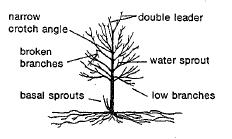 Figure 9. Prune to a central leader. Remove all broken, weak and interfering branches. Prune to maintain the typical form. Remove problem branches as indicated.
Figure 9. Prune to a central leader. Remove all broken, weak and interfering branches. Prune to maintain the typical form. Remove problem branches as indicated.Main side branches should occur singly (alternately) on street and shade trees. However, trees such as ash and maple frequently have major branches occurring in pairs across the main stem. They can be pruned alternately up to 12 to 18 feet. Select and maintain major side branches spaced 24 to 36 inches apart on alternating sides of the stem. Select branches with wide angles of attachment, usually 60 to 90 degrees between the trunk and branch. Remove all watersprouts and basal sprouts.
Proper pruning for branch removal leaves the smallest possible wound. Small wounds close more rapidly than larger ones. Wound paints are not necessary and are ineffective in reducing wood decay or promoting wound closure. Do not overprune or remove excessive foliage. Always leave two-thirds of the tree height in the living crown. Leaving more leaves on a tree provided with adequate moisture and essential elements results in increased tree growth, health and vigor.
Staking
Most established young trees can stand alone against the wind. Young trees with excessively long new shoots or those exposed to windy sites may require staking to remain upright.
Anchorage staking holds the roots or root ball stationary until the roots become anchored. Use two or three short stakes for anchorage. Extend stakes 12 to 18 inches above the ground. Loop one tie strap snugly around each stake and the tree trunk. Low attachment prevents root ball dislodgement yet allows the top to move. Staking is only meant to be temporary. Check ties frequently.
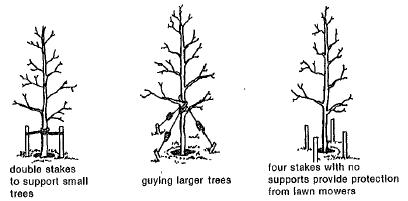 Figures 10 and 11. Staking young trees provides support and protection while allowing for top movement to improve stem strength. Protective staking keeps mowing equipment and vehicles from damaging young trees. Three or four short stakes are placed 15 inches apart around the tree protruding 30 inches from the ground. The stakes must be easily visible to prevent pedestrian injuries. Eliminating grass and weeds from around the tree trunk with mulch will reduce mower damage. (Photo for Figure 11: Timothy Daly, Gwinnett County Extension.)
Figures 10 and 11. Staking young trees provides support and protection while allowing for top movement to improve stem strength. Protective staking keeps mowing equipment and vehicles from damaging young trees. Three or four short stakes are placed 15 inches apart around the tree protruding 30 inches from the ground. The stakes must be easily visible to prevent pedestrian injuries. Eliminating grass and weeds from around the tree trunk with mulch will reduce mower damage. (Photo for Figure 11: Timothy Daly, Gwinnett County Extension.)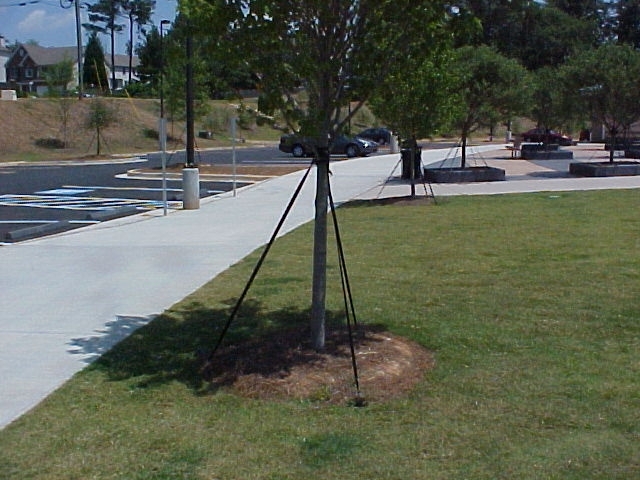
Support staking aids trees whose trunks are not strong enough to stand upright or fail to return upright. Support the top about 6 inches above the lowest level at which the trunk can be held and remain upright to allow top flexibility while providing support. Support the trunk so it can flex without rubbing against the stakes or ties. Ties must not damage tender bark or girdle the expanding trunk. Support staking holds the tree upright until it can stand alone.
Wrapping
Newly planted thin-bark trees such as red maple or cherries may benefit from wrapping at planting. Thinbarked trees planted on hot sites are susceptible to sunscald, and spring planted trees can be susceptible to sunburn. Sunscald occurs when the cambium of thinbarked trees heats up during sunny fall or winter days. High temperatures from the summer sun may kill the cambium. Cold temperatures following warm periods can also kill cambium cells in the trunk. Long vertical scars run down the trunk from the lowest branches to the soil line. Injury usually occurs on the southwest side of the trunk.
 Figure 12. These trees have been wrapped prior to installation.
Figure 12. These trees have been wrapped prior to installation.
Commercial tree wraps or plastic tree guards will protect young trunks and insulate the cambium. Tree wraps also protect young trees from girdling by rodents. Start at the base of the trunk and wrap up to the lowermost limbs. Overlap each layer by 1/2 inch. Wrap the tree in the fall and leave the wrap in place throughout the winter and early spring. Tree wraps are temporary and no longer needed once trees develop corky bark.
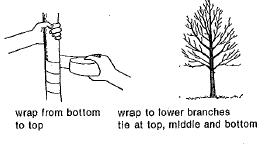 Figure 13. Trunks of newly planted trees may need to be wrapped. Start wrapping at the tree base and work up to the lowest branches. Secure the wrap tightly.
Figure 13. Trunks of newly planted trees may need to be wrapped. Start wrapping at the tree base and work up to the lowest branches. Secure the wrap tightly.Fertilization
Young trees growing in lawns that are regularly fertilized do not require additional fertilization. Trees exhibiting poor growth require a soil test to determine if essential elements are in short supply. When nitrogen is required, fertilize trees by applying 3 pounds of nitrogen per 1,000 square feet of area per year. Make two or three applications, one each in April, June and October at 1 pound of nitrogen per 1,000 square feet. Water each site after applying fertilizer. Fertilizing trees with a turfgrass or groundcover understory requires multiple applications at light rates to avoid injury to these plants.
Mulching
Mulches aid in young tree establishment and growth by conserving moisture and reducing evaporation from the soil surface. Mulches reduce erosion, water runoff, competition and compaction. Mulches can also effectively reduce summer soil temperatures to create a more favorable root environment. Organic mulches break down and add essential elements to the soil. They also eliminate the need for ground covers and turfgrasses beneath young trees, thereby reducing competition for essential elements and moisture. Mulching prevents serious injuries to young tree trunks because there is no need to mow or use stringtrimmers beneath trees.
To improve growth, apply 3 to 4 inches of an organic mulch to young trees beyond the edge of the canopy. Appropriate mulches include pine bark, pine straw and wood chips. Organic mulches more effectively insulate the soil than inorganic or rock mulches. Pull all mulches back from the trunk 4 to 6 inches to prevent diseases from invading the trunk. Rodents may live and burrow in loose mulches. Be alert for these pests. Mulches keep soils wet and should not be used on wet sites.
Improving Growth
You can improve tree growth by following a few basic cultural practices.
- Eliminate competition from turfgrasses and ground covers underneath young trees.
- Apply mulch beneath the canopy and out beyond the edge of the foliage to improve the root zone environment.
- Apply fertilizers directly to the surface of the mulched area.
- Make sure the trees receive enough water during periods of drought.
- Keep lawn mowers and string-trimmers away from tree trunks.
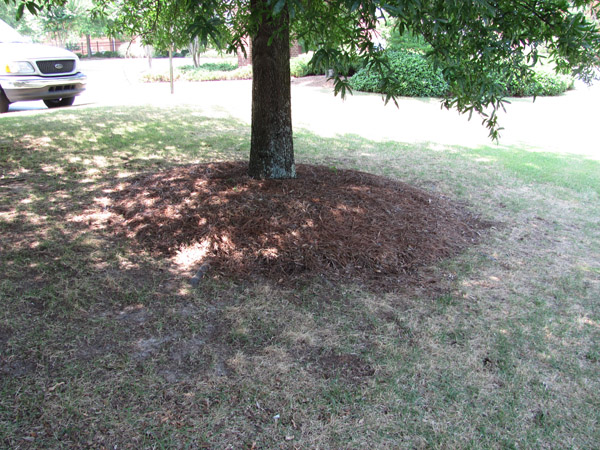 Figure 14. Young trees benefit from organic mulch applied 3 to 4 inches beneath the canopy. Apply water and essential elements directly to the mulched area. Eliminate competition from turfgrasses and ground covers. Lawn mowers and string trimmers need not endanger the tree. (Photo: Timothy Daly, Gwinnett County Extension.)
Figure 14. Young trees benefit from organic mulch applied 3 to 4 inches beneath the canopy. Apply water and essential elements directly to the mulched area. Eliminate competition from turfgrasses and ground covers. Lawn mowers and string trimmers need not endanger the tree. (Photo: Timothy Daly, Gwinnett County Extension.)Mature Tree Care
Fertilization
Existing shade and street trees rarely need to be fertilized when growing in maintained turfgrass. These trees absorb and use fertilizer applied to lawns and shrub beds. However, trees not receiving essential elements from existing landscape sources may require fertilization. Test the soil to determine if low element levels exist. Nitrogen can be in short supply. Apply nitrogen at the rate of 3 pounds per 1,000 square feet of area per year. Make three applications during the growing season on trees growing in turfgrass or ground covers. Tree root systems extend well beyond the edge of the canopy. Broadcast fertilizer in an area 1.5 times the diameter of the canopy. Do not fertilize stressed trees before leaves are fully expanded in spring.
Surface Roots
Surface roots can be an unsightly problem. Roots do not suddenly grow on the soil surface. Initially, young tree roots grow 1 to 4 inches below the soil surface. Root expansion causes increased diameter and after 20 or 30 years expose roots at the soil surface. Erosion speeds root exposure. Exposed roots are easily damaged.
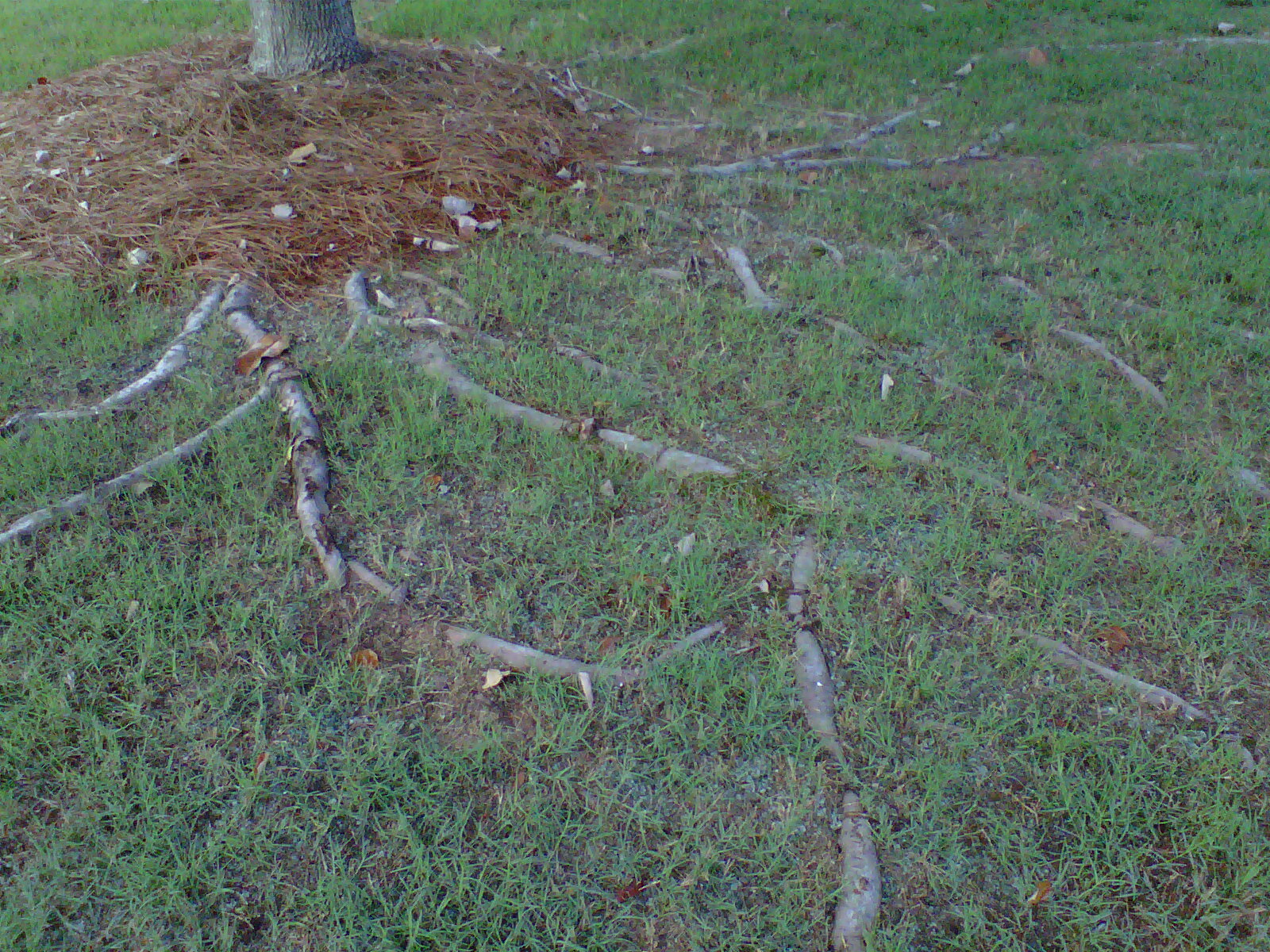 Figure 15. The roots of maples and other trees are shallow and can be exposed on the soil surface. This area should be converted into a mulched bed to keep equipment off the root zone. (Photo: Timothy Daly, Gwinnett County Extension.)
Figure 15. The roots of maples and other trees are shallow and can be exposed on the soil surface. This area should be converted into a mulched bed to keep equipment off the root zone. (Photo: Timothy Daly, Gwinnett County Extension.)Mulching with pine straw, pine bark, aged wood chips or other organic materials can be beneficial. Mulching exposed roots physically protects them, conserves soil moisture and prevents direct sunlight from heating the roots and soil. Exposed roots need protection from pedestrian and vehicle traffic, including mowers.
Applying mulch 3 to 4 inches around the tree base will keep most weeds and grass out. Eradicate any existing grass and mulch within 4 to 6 feet of the trunk. Ideally, apply mulch at least half the distance to the edge of the crown. Apply enough mulch to cover all the exposed tree roots. Form mulch islands for groups of trees.
Root Control
Root barriers are becoming more popular for use around curbs and gutters, parking lots, sidewalks and driveways. Root barriers prevent tree roots from colonizing soil and then breaking paving as they increase in size. Place root barriers in the soil at the edge of concrete, asphalt, or brick paving. Barriers can be made of thick plastic, metal or herbicide-impregnated cloth buried vertically in the soil. Effective depths depend upon soil texture. Usually 18 to 24 inches is required for protection.
Install root barriers by trenching along the area to be protected. Trenching severs the roots growing into the area. The barrier prevents roots from growing back into this protected area. Root barriers can minimize further maintenance expense and liability problems.
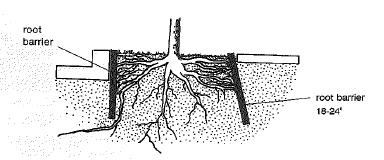 Figure 16. Root barriers prevent unwanted root growth under curbs and sidewalks.
Figure 16. Root barriers prevent unwanted root growth under curbs and sidewalks.Root barriers are used along underground utility corridors and tightly constrained root areas, such as tree islands in parking lots. Seal in-ground tree containers with root barriers to ensure the tree stays within the container. Be sure to allow as much rooting space as possible for future growth.
Tree root problems occur around septic fields and sewer lines. Tree roots are often blamed for plugging and breaking pipes, but they cannot exert enough pressure to break into a sewer line. Instead, natural settling, age and wear cause lines to crack, which encourages roots to grow into the area and penetrate through the crack. As roots increase in size, cracks widen and breaks occur.
A rotary knife can cut roots in sewer lines from inside. Periodic use of specialty root control products will kill new roots moving into the line. Root killing foams can fill the entire line from top to bottom. Foams are effective for keeping tree roots out of the sewer lines; however, severe water pollution can result from root killing chemicals. Chronic, long-term problems can be corrected by replacing the line and installing a root barrier.
Hollow Trees
Hollow trees are liabilities resulting from earlier tree abuse. Mechanical damage and improper pruning leads to invasion of wood by many organisms. Fungi cause wood decay. Termites, carpenter ants and other insects assist with hollow formation.
A hollow portion of a tree will be the same size as the diameter of the tree when the injury occurred. Decaying fungi enter damaged wood but will not move into new wood produced after the injury. The fungi will attack all the wood present at the time of the injury. A tree damaged and invaded when it was 6 inches in diameter could eventually have a hollow 6 inches in diameter. If the tree is repeatedly injured, hollows will grow into each newly damaged annual ring.
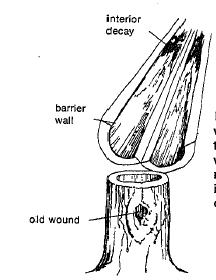 Figure 17. Hollow trees result from wounds. All interior wood present at the time of injury decays, leaving only new wood around the outside. Callus tissue must be prevented from rolling inward into the hollow if the wound is closed.
Figure 17. Hollow trees result from wounds. All interior wood present at the time of injury decays, leaving only new wood around the outside. Callus tissue must be prevented from rolling inward into the hollow if the wound is closed.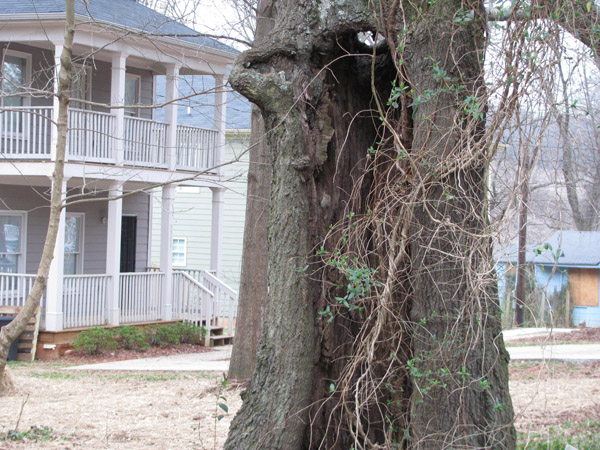 Figure 18. A hollowed-out tree is the result of wounds the tree sustained in the past, possibly as a result of construction activities. (Photo: Timothy Daly, Gwinnett County Extension.)
Figure 18. A hollowed-out tree is the result of wounds the tree sustained in the past, possibly as a result of construction activities. (Photo: Timothy Daly, Gwinnett County Extension.)Do not clean out hollows. Scraping or cutting the inside can break protective barriers, causing extensive damage and making the tree susceptible to further decay. Hollows may contain water. Do not drain hollows. If water is present for one or more growing seasons, the tree has already adjusted. Drilling holes or cutting slices for drainage will break protective barriers and allow more decay.
Filling hollows can also damage trees. Do not fill hollows with cement, asphalt, gravel or other hard, abrasive material. The strength of a hollow tree comes from the new wood produced around the hollow. Rigid filling can lead to tree breakage just above or below the hollow because they cause internal wounds as trees bend and twist. In special cases a foam filling can be used. Remove hollow trees that appear weak and likely to fall.
Cover hollow openings to keep out animals and water. A covering of tin or metal window screen filled with plaster can form a waterproof shield. A firm cover allows new tissue (callus) to grow over the opening. The cover prevents the callus from curling or rolling inward, which will cause severe structural faults.
Girdling Roots
Tree roots can become tangled, crossed or circled. Major roots crossing or circling the tree base girdle the trunk and will lead to tree decline and death. Cut away girdling roots on older trees. Soil excavation may be necessary to reveal girdling roots at the base of large trees. Flat-sided trunks indicate girdling pressure from underground roots. Prune off all roots causing trunk constrictions.
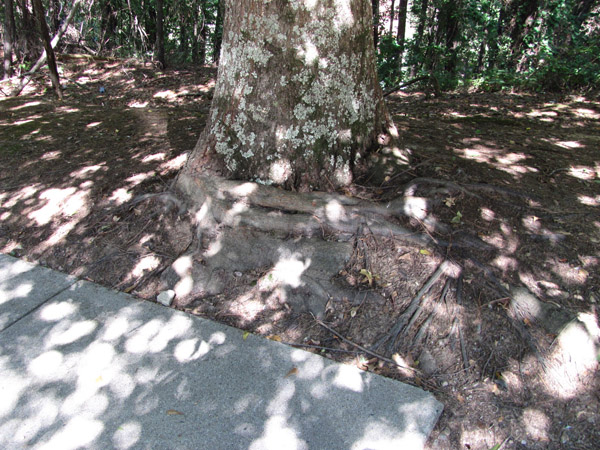 Figure 19. A girdling root can be detrimental to tree health in the long run. (Photo: Timothy Daly, Gwinnett County Extension.)
Figure 19. A girdling root can be detrimental to tree health in the long run. (Photo: Timothy Daly, Gwinnett County Extension.)
Cabling and Bracing
Cabling and bracing is a dangerous and specialized treatment for mature trees and should be prescribed and installed by an expert arborist. Cables and metal rods hold branches together, keep the crown together and prevent tree splitting. Cabling and bracing is the final attempt to save a tree when it can no longer support itself. Improper installation of cables and braces can lead to branch breakage and tree destruction. Cabling and bracing changes the tree?s center of gravity and the major mechanical stress points. Installing a $2,000 cable job and then losing the tree to the next storm is not cost effective. Seek expert advice for proper cabling and bracing.
Sprouting
Water sprouts on the trunk or in the crown and suckers around the tree base arise when dormant buds are released. Stress to the tree canopy, trunk or roots by insects, disease, breakage or water shortage may release latent buds. These buds rapidly grow into long water sprouts or basal suckers.
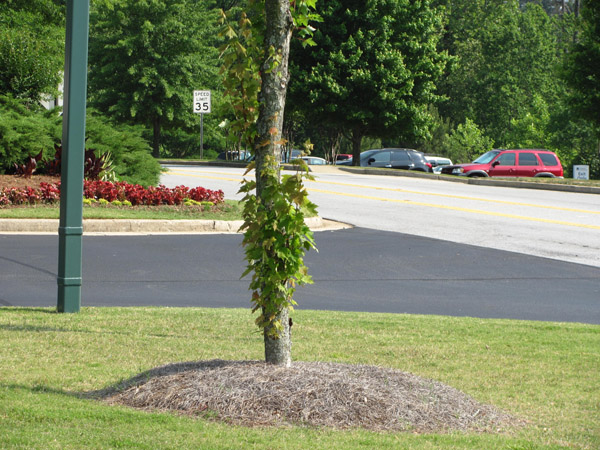 Figure 20. Trees that are under stress sometimes develop basal suckers. (Photo: Timothy Daly, Gwinnett County Extension.)
Figure 20. Trees that are under stress sometimes develop basal suckers. (Photo: Timothy Daly, Gwinnett County Extension.)
Prune out water sprouts and suckers or growth control will shift from the crown to these new vigorous branches. Trees under stress will use successful new sprouts to allow shrinkage of their total canopy. The top-most branches will be sealed off and die. Excessive sprouting is a sign of serious tree stress problems. Sprout removal and improving tree vigor are proper treatments.
Wounds
Wounds on trees are serious. The larger the wound, the greater the chance of long-term health problems. Remove loose bark, loose wood and all dead material. Do not aggravate the wound with excessive shaping. Dead tissue will pull away easily. If it does not, leave it alone. Wounds should not be covered, painted or sealed. Leave wounds open to the atmosphere and allow the tree to seal off the injury and adjust to the wound without interference.
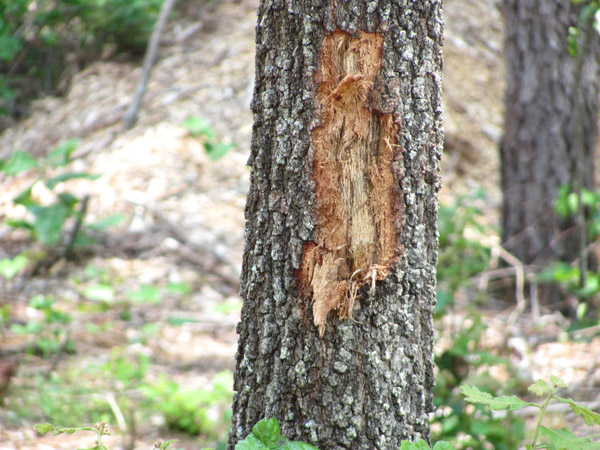 Figure 21. Equipment use, such as in construction activities, can cause wounds to trees, increasing their vulnerability to pests and environmental stresses. (Photo: Timothy Daly, Gwinnett County Extension.)
Figure 21. Equipment use, such as in construction activities, can cause wounds to trees, increasing their vulnerability to pests and environmental stresses. (Photo: Timothy Daly, Gwinnett County Extension.)Tree Wells
Soil fill around existing trees can inhibit gas exchange and soil moisture absorption. Soil aeration is critical. Tree roots must receive adequate oxygen and be able to exchange carbon dioxide. Soil fill also keeps tree trunks moist, which may lead to pest infestation. Trees tolerant of soil fill may be able to survive 6 inches of well-drained soil fill with little harm. Sensitive trees may not survive 2 inches of fill. The allowable amount of soil fill depends upon soil texture and the reactivity of tree roots to soil fill.
Install a tree well around existing trees where soil filling is planned. A dry well around the trunk will protect the tree. Aeration spokes of gravel or perforated plastic pipe radiating out from the well to beyond the edge of the dripline allows gas exchange.
Hazardous Trees
Hazardous trees exist on many city streets and home grounds and are usually severely abused trees. These trees pose a hazard or a liability risk to property, animals and humans. Hazardous trees may have large dead branches in the crown or along the trunk. Falling wood can damage property and injure people. Hazardous trees with large stress cracks can easily split, and trees with restricted root zones may blow down, disrupting above- or below-ground utilities. Hazardous trees may fall and block streets and highways. Evaluate your trees to detect and correct any hazards that exist.
Remove hazardous trees as soon as possible. Removal minimizes liability risks. Do not underestimate the liability problems associated with abused and damaged trees. A limb falling on a car, a child or a house can be devastating. If you have questions about the structural integrity of your trees, seek professional assistance.
Professional Tree Care
Trees are a unique and valuable resource. Your tree assets should have the best care available. Select a tree care professional carefully. Tree care professionals include arborists, ornamental horticulturists and urban foresters. Check the list below when looking for a good tree care professional.
Professional Reputation - Ask for recommendations from neighbors, business associates, professionals caring for trees and the Better Business Bureau.
Customers - Ask for names of customers with similar problems. Call customers and visit sites to determine the quality of the company?s work.
Liability Insurance - Only hire a firm or individual with current liability insurance. Ask for the name and contact information of the insurance company. The value carried should be great enough to cover all possible damages that might occur.
Service Contracts - Examine contracts for time limits, type of clean up and quality guarantees.
Education and Experience - Discuss personal experience and areas of specialization. Has the tree professional dealt with problems similar to yours? Make sure the person who will be doing the tree assessments is certified through the International Society of Arboriculture.
Bids - The lowest bid may not be the best for you and your trees. Thoroughly research and compare the bids carefully before purchase.
Contracts - Carefully examine the written specifications of the estimates to determine the best combination of price, work to be done, skill and professionalism. Most reputable arborists present their clients with a detailed contract explaining when the work will be started and finished as well as who will be responsible for the cleanup. Also make sure the contract specifies the total costs and ask if there are any hidden fees, such as stump grinding, which often is an additional cost.
Summary
The long-term health of your trees, your property value and your liability risks will be affected by your tree care choices. Make financially and biologically sound decisions. Taking proper care of your trees will reward you with healthy, attractive shade and street trees. The International Society of Arboriculture (www.isa-arbor.org), the Georgia Arborist Association (www.georgiaarborist.org/) and The University of Georgia Warnell School of Forestry and Natural Resources (www.warnell.uga.edu) are excellent sources of information on tree care.
1Agricultural and Natural Resources Agent, Gwinnett County Cooperative Extension
2Extension Horticulturist
3Extension Forester
Status and Revision History
In Review on Feb 24, 2009
In Review for Minor Revisions on Feb 24, 2009
Published with Minor Revisions on Jul 09, 2011
Published with Full Review on Jul 25, 2014


























































